Siege of Dyrrhachium (49/48 BCE)
Q525325Siege of Dyrrhachium (49/48 BCE): an inconclusive battle during Rome's Second Civil War, in which Pompeius the Great defeated Julius Caesar.
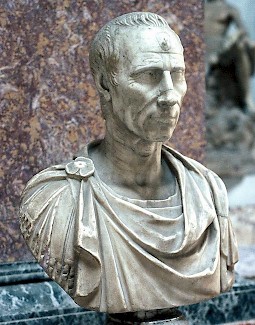
Dyrrhachium (also known as Epidamnus, modern Durrës in Albania) is at the beginning of the Via Egnatia, the Roman road that connected the Adriatic Sea to Macedonia and the Aegean Sea. The town became the center of a series of military engagements during the Second Civil War (49-48), in which Julius Caesar fought against Pompey the Great. At issue was the ultimate fate of the Roman Republic: a monarchy, as Caesar eventually created, or a republic with a very strong, military leader, as Pompey proposed (and Octavian eventually created).
In January 49, Caesar had invaded Italy at the Rubico, and Pompey had evacuated Italy, which could not be defended against Caesar's experienced soldiers (17 March). After a lightning campaign in Spain, where he defeated several legions loyal to Pompey, Caesar directed his attention to Greece, where his opponent was building a new army that consisted of nine legions. He wanted to invade Italy, and needed Dyrrhachium as his base. When the campaign started, Pompey was still collecting his army in an area the southeast of this port.
Caesar employed eleven legions (V Alaudae, VI Ferrata, VII, VIII, VIIII, X Equestris, XI, XII, XIII, XIV, XXVII), but was unable to transport more than seven across the Adriatic Sea. Having landed at Apollonia, south of Dyrrhachium, the conqueror of Gaul immediately sent two legions to the east, to prevent Pompey from receiving reinforcements. With the remaining five units, Caesar marched to the north and pitched camp between Pompey and Dyrrhachium. When Pompey arrived, he built his camp at a hill called Petra, "rock". Because his men were still untrained, he declined battle.
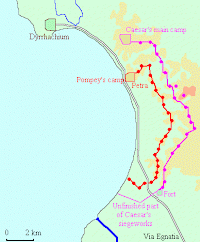
Therefore, Caesar started to build fortifications. This would prevent Pompey's soldiers from obtaining food from the countryside, prevented his cavalry from attacking, and -even more important- would give the impression that Pompey was besieged and did not dare to fight. So, Caesar's men contructed twenty-four forts and a wall of 22 kilometers.
Pompey built counter-works. There were several fights between the two Roman forces, in which Caesar's Ninth Legion suffered badly. The building of the circumvallations, however, continued. In his History of the Civil War, Caesar tells that during one fight in a southern fort, one centurion received no less than 120 blows on his shield - evidence of the discipline and high morale of the legionaries.
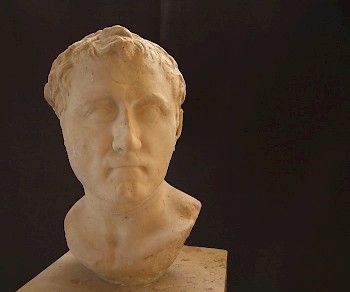
The southernmost part of Caesar's fortifications were still unfinished, and it was absolutely imperative for Pompey to break away from his camp before the ring would be closed. This became even more urgent when Caesar's lieutenant Mark Antony arrived with the remaining four legions. During a night, 7 July according to the Roman calendar (which is out of step with ours), Pompey ordered his soldiers to attack the unfinished part of Caesar's fortifications, and after a day of fighting, Caesar had to admit that he would not be able to regain control of this part of the battlefield. This meant that his circumvallation would not be closed, and he immediately broke off the siege, marching off to Thessaly in the east.
He had lost many men, had given Pompey a chance to train his recruits, and had no line of communication back to Italy. Still, his men remained disciplined and motivated, and within a month, they would prove their worth at Pharsalus.
The main source is Caesar's History of the Civil War, 3.2-19, 23-31, 39-74.
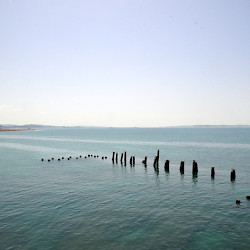 Dyrrhachium battlefield, Pompey's port |
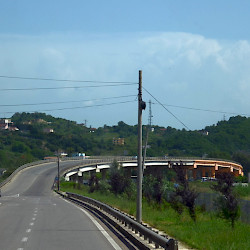 Dyrrhachium battlefield, Approach from the northwest |
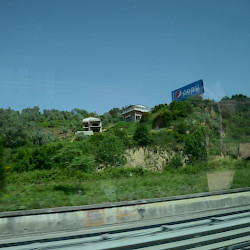 Dyrrhachium battlefield, Petra |
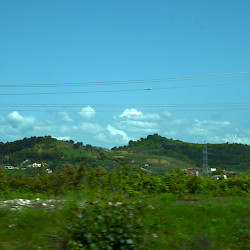 Dyrrhachium battlefield, view from Pompey's to Caesar's positions |